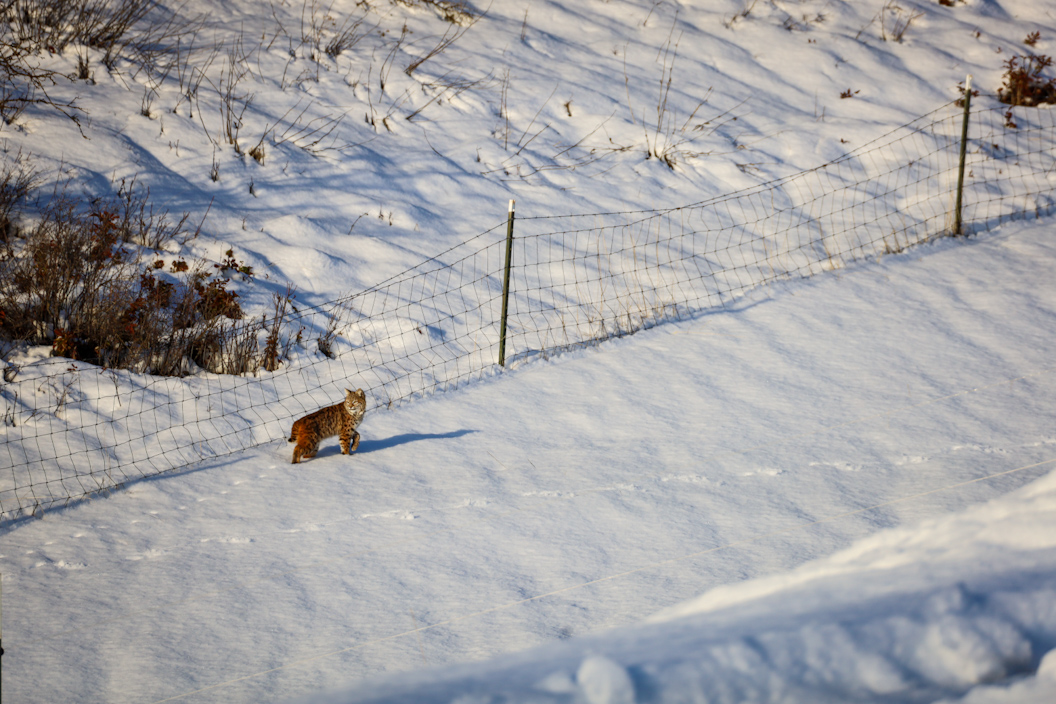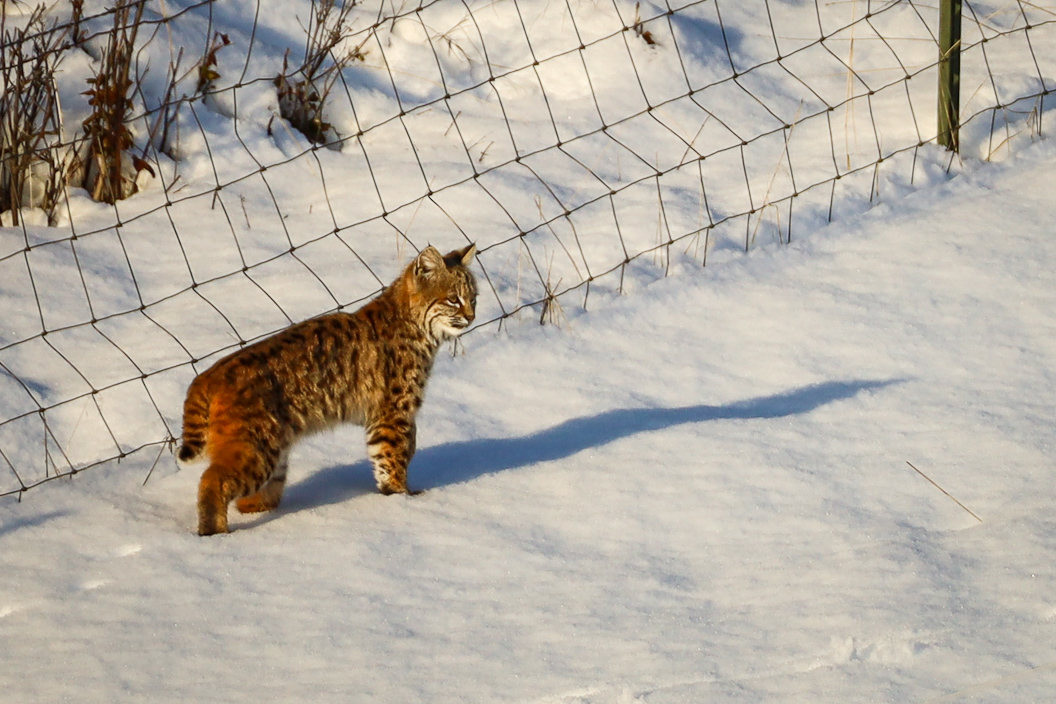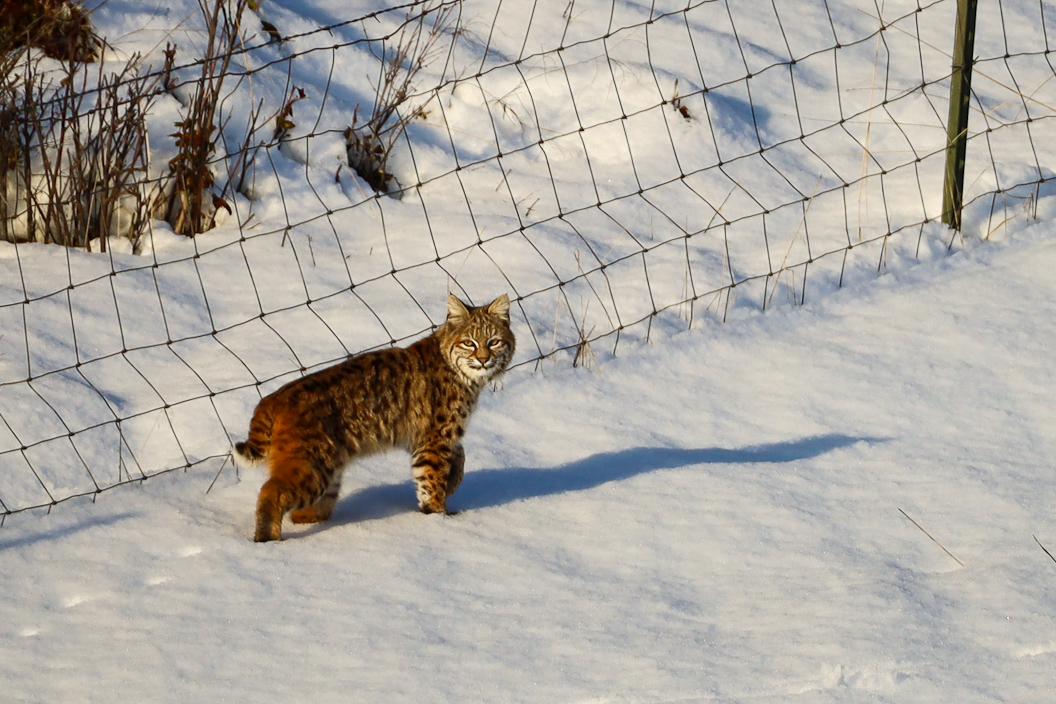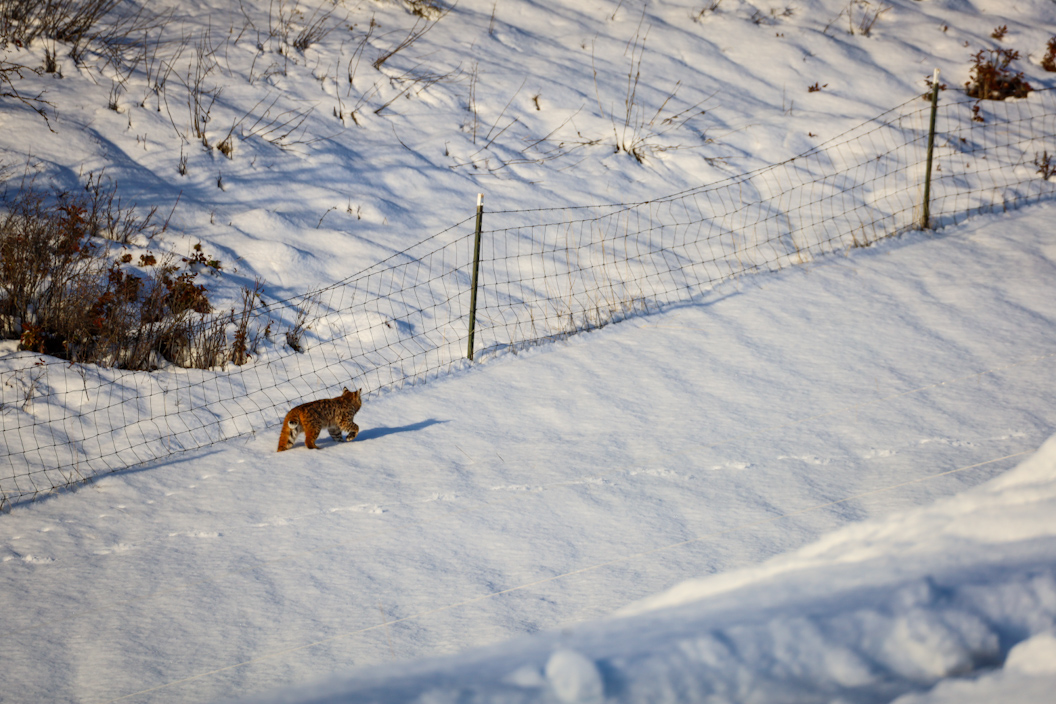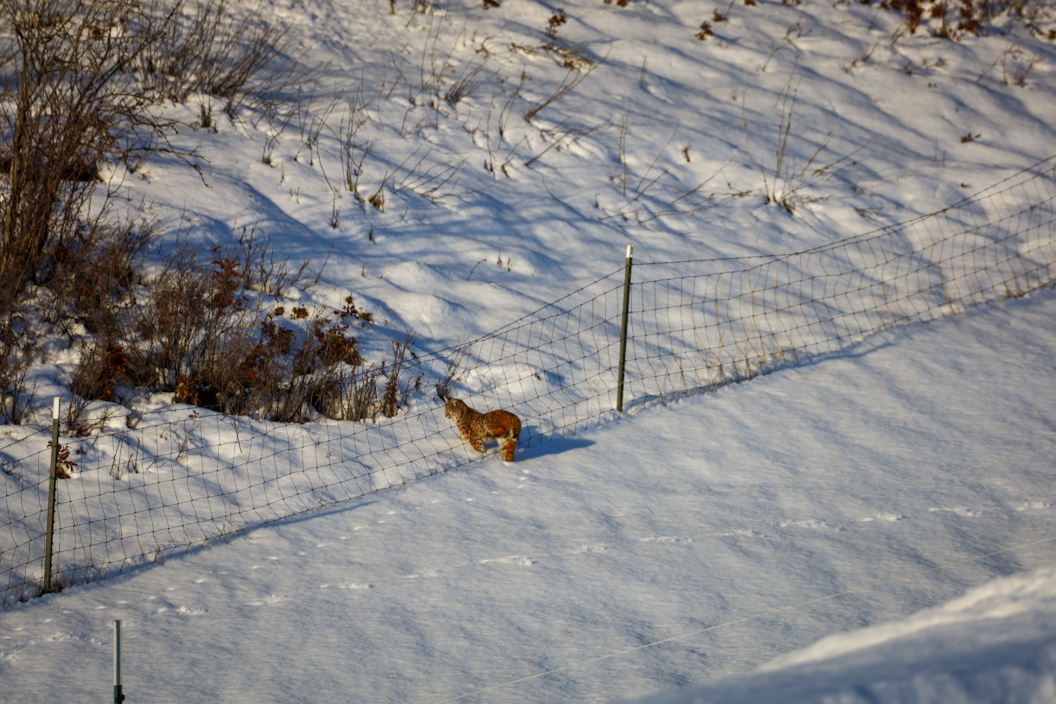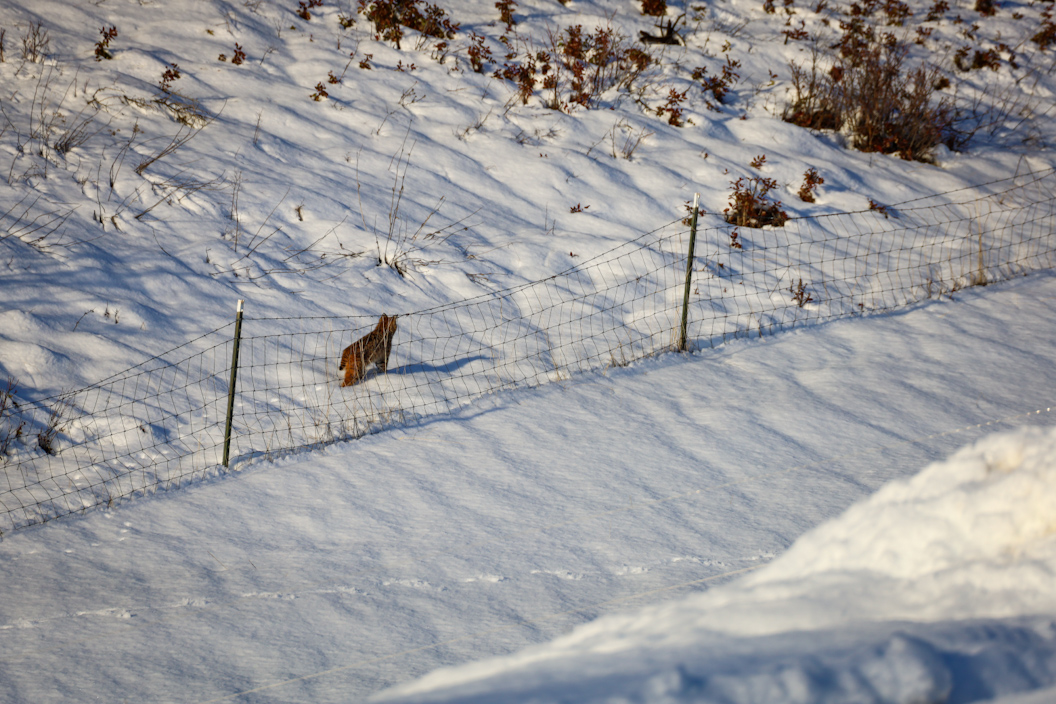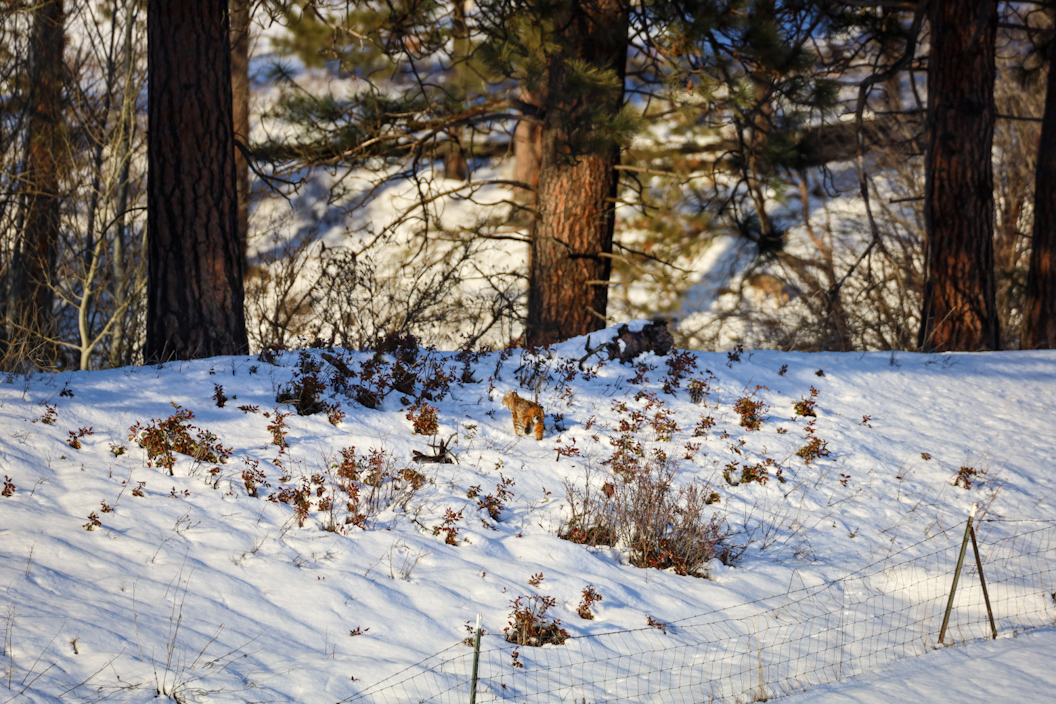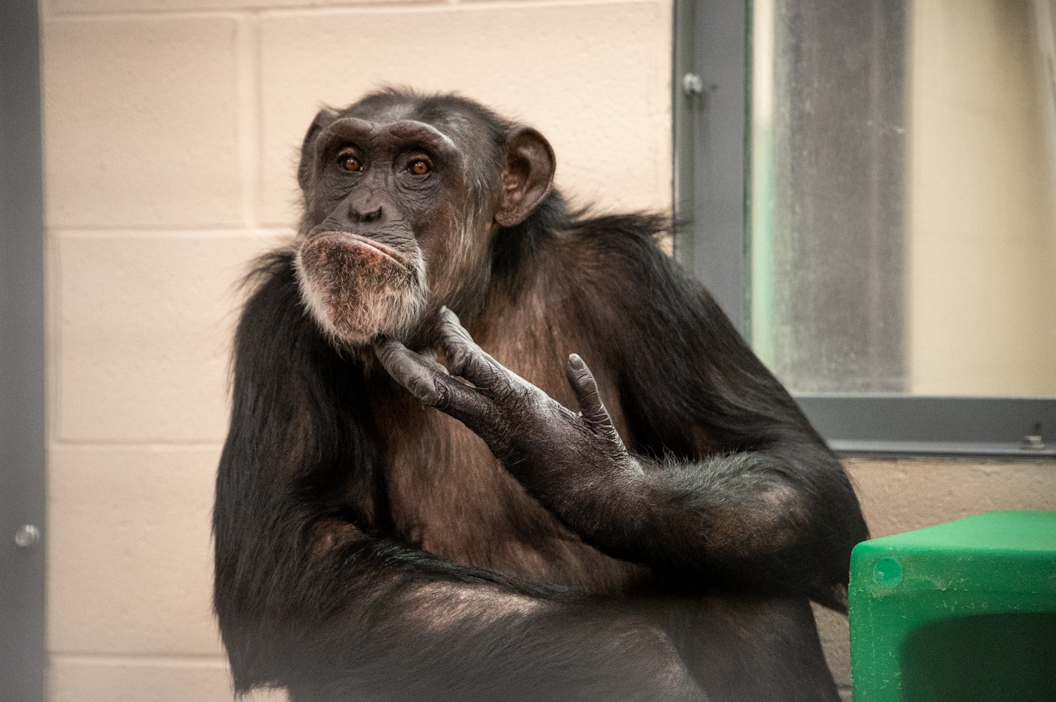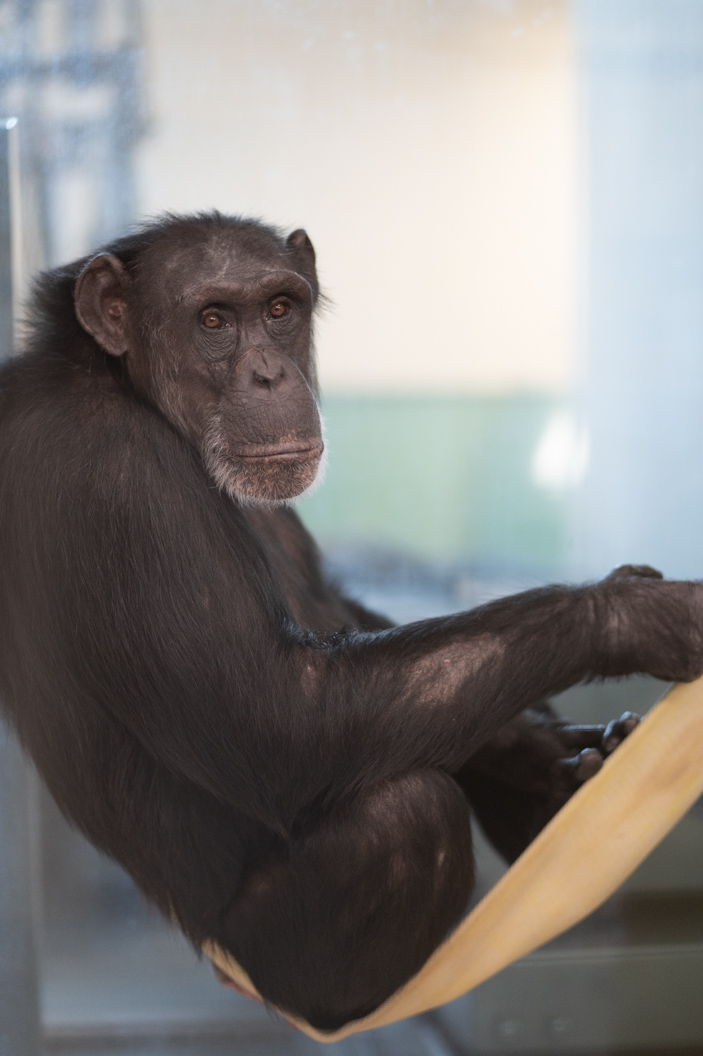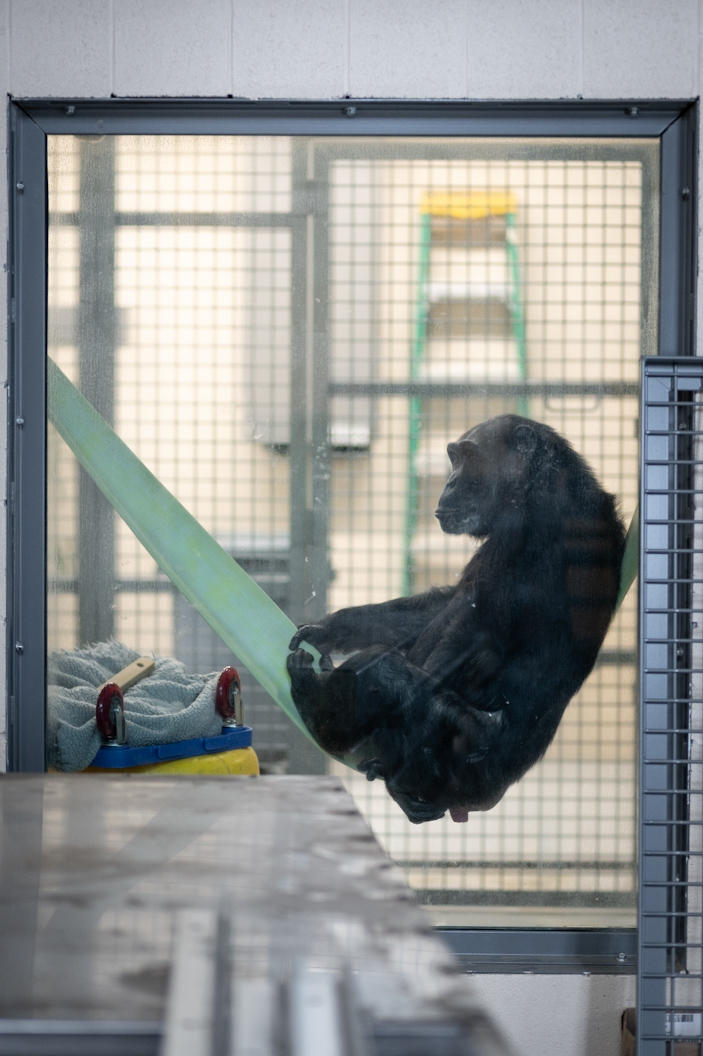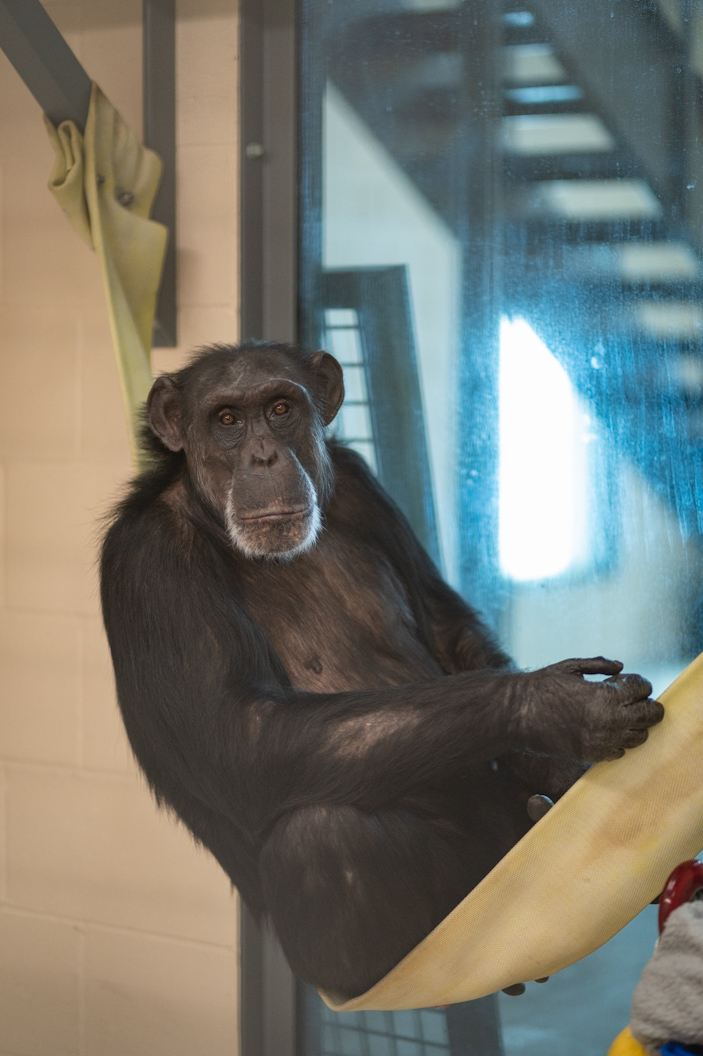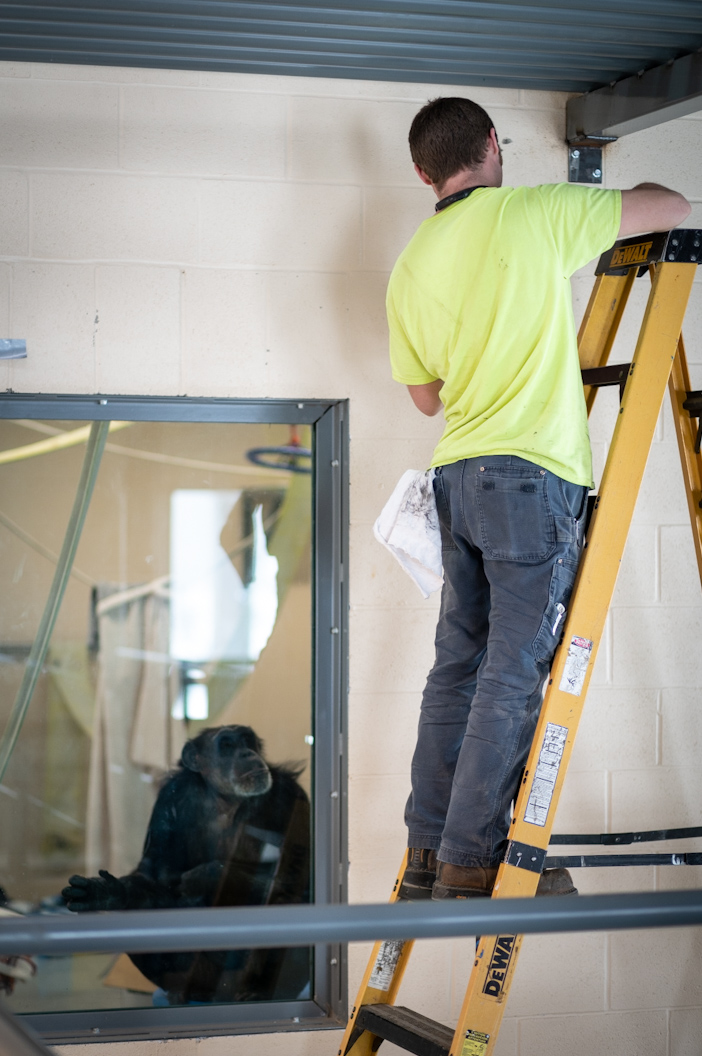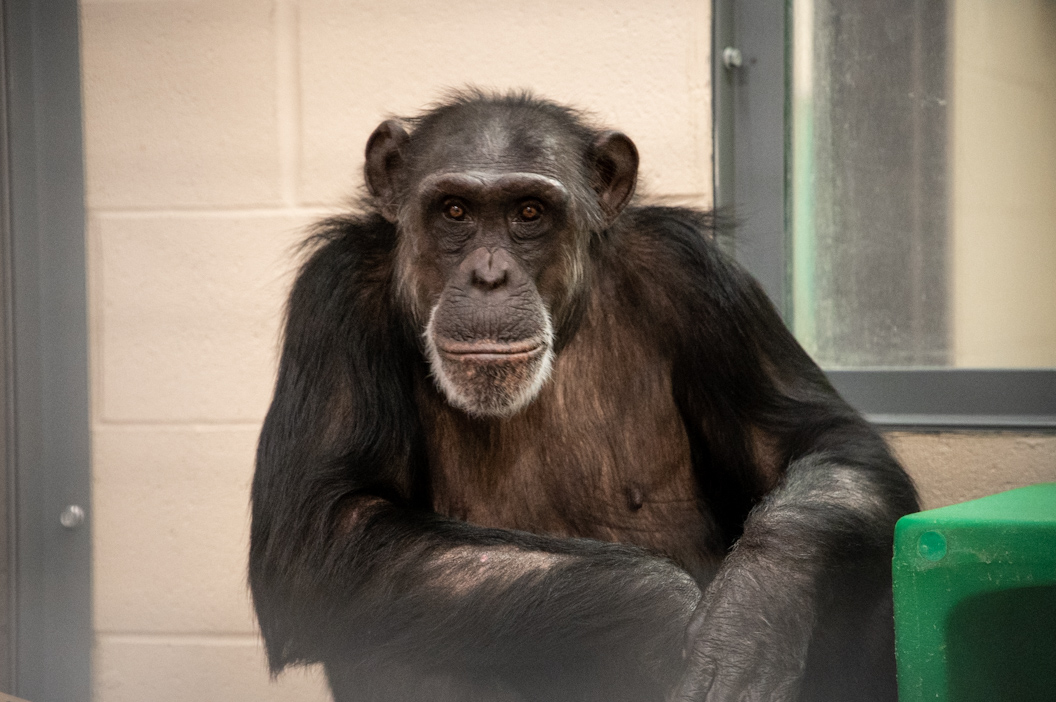Last week, an interesting creature visited the sanctuary. We caregivers paused to conduct some informal observations.
The visitor was a bobcat. Also known as “red lynx,” bobcats (Lynx rufus) are medium-sized felines native to southern Canada, the entire continental USA, and northern Mexico.
Unlike other species of lynx, bobcats are highly adaptable and can thrive in proximity to humans. Because of this behavioral flexibility, bobcat populations persist in suburban and agricultural environments and are one of the least threatened species of wild feline.
We often see the signs these creatures leave behind as they roam across the sanctuary’s wooded farmland (usually manifesting as tracks left behind in the snow or mud). Their prints complement those of the numerous wild animals who have adjusted to our presence: badgers, black bears, cougars, coyotes, deer, elk, marmots, mice, porcupines, skunks, squirrels, weasels, voles, and countless species of birds, reptiles and amphibians. Until last week, however, none of us had managed to take a photograph of a living bobcat on the sanctuary campus.
From the kitchen window, I first spotted the bobcat trudging through the pasture just north of the Chimp House. The powdery snow was a couple feet deep out there, but the cat was using its furry paws to stay afloat as if they were snowshoes. Anna and I were closing up the facility for the evening, but we immediately grabbed binoculars and a camera so that we could observe and photograph the creature from our “blind” in the building’s foyer.
The bobcat was clearly hunting for the various rodents that tunnel invisibly beneath the snow. At times, the creature sat on its haunches and listened intently before continuing forward. Eventually, the bobcat pounced on some scurrying prey (likely a vole) but emerged from the snow without its quarry. After that unsuccessful attempt, the cat meandered its way up the hill and disappeared into the woodland above.
Shockingly, the bobcat didn’t seem to notice us. The chimps, meanwhile, were too engrossed in their evening food puzzles to even look out the window. They’ve probably seen lots of wild animals that the humans don’t notice, although even they appear to be fascinated at times.
Of course, the caregivers aren’t the only ones who observe their neighbors around here. As always, the chimpanzees continue to observe the humans. Although they often focus on the caregivers who perform the usual tasks in their vicinity, the chimps also pay close attention to the ongoing expansion of the Chimp House.
Currently, Honey B, Mave and Willy B can watch the construction progress from the safety of their indoor enclosures (which are adjacent to the new playrooms). Honey B, in particular, is captivated by the three gentlemen who are installing the caging, windows, climbing structures and hydraulic doors in the new areas. She balances her observation time, alternating between staring intently at us and monitoring the welders and laborers on the other side.
We often think about how much time humans have spent observing and studying wildlife, including free-ranging and captive chimpanzees, but Honey B appears determined to even the score.
